Showing 241–250 of 256 results
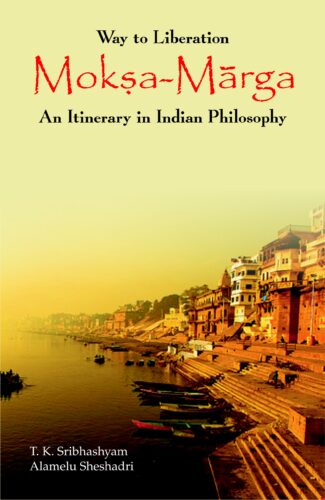
The book projects light on concept of contemplation and meditation, including meditation techniques and practices, which is central to the attainment of moksha. It also explains meaning of love, devotion, religion, the body-soul relation and the three yogas understanding of which is essential to attain moksha.
The way to liberation or moksha needs perfect knowledge, perfect action and perfect surrender to the Lord. The bhakta becomes a bhagavata as he not only knows and sees but also lives as a servant of God. Moksha is the final approach to the purity and perfection of the human soul. This volume attempts an in-depth study of the concept of liberation or moksha and the way to attain it.
The book begins with the meaning of love, devotion, religion, the body-soul relation and the three yogas, an understanding of which is essential to understand the concept of moksha. In this context, it delves into the meaning of the Brahman, the Absolute, as conveyed in the Vedas and other religious works like the Upanishads and the Bhagavad-Gita, the concept of the universal spiritual entity of Sarveshvara, concepts of sin and virtue, and even the principles of monotheism and polytheism in Hinduism. Quoting from the scriptures and other relevant texts, it emphasises on the notion of devotion and its benefits to examine the means to self-realisation and liberation and includes a study of the concept of contemplation and meditation, including meditation techniques and practices, which is central to the attainment of moksha.
With interesting illustrations, the volume will be useful to religious scholars and students and seekers on the path of spiritual fulfilment.
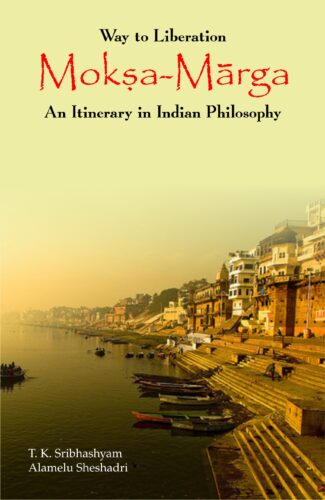
The book projects light on concept of contemplation and meditation, including meditation techniques and practices, which is central to the attainment of moksha. It also explains meaning of love, devotion, religion, the body-soul relation and the three yogas understanding of which is essential to attain moksha.
The way to liberation or moksha needs perfect knowledge, perfect action and perfect surrender to the Lord. The bhakta becomes a bhagavata as he not only knows and sees but also lives as a servant of God. Moksha is the final approach to the purity and perfection of the human soul. This volume attempts an in-depth study of the concept of liberation or moksha and the way to attain it.
The book begins with the meaning of love, devotion, religion, the body-soul relation and the three yogas, an understanding of which is essential to understand the concept of moksha. In this context, it delves into the meaning of the Brahman, the Absolute, as conveyed in the Vedas and other religious works like the Upanishads and the Bhagavad-Gita, the concept of the universal spiritual entity of Sarveshvara, concepts of sin and virtue, and even the principles of monotheism and polytheism in Hinduism. Quoting from the scriptures and other relevant texts, it emphasises on the notion of devotion and its benefits to examine the means to self-realisation and liberation and includes a study of the concept of contemplation and meditation, including meditation techniques and practices, which is central to the attainment of moksha.
With interesting illustrations, the volume will be useful to religious scholars and students and seekers on the path of spiritual fulfilment.
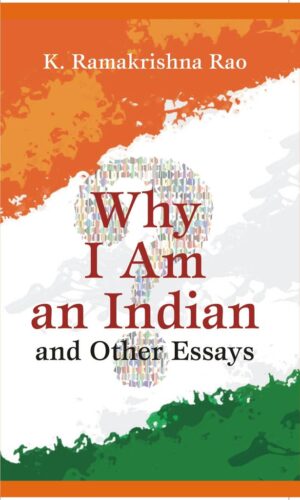
This volume reflects the evolution and growth of Prof. K. Ramakrishna Raos thought and the different dimensions and shades of his academic pursuits, ranging from Gandhis thought to consciousness studies, educational issues, identity problems, parapsychology, and Indian psychology in general and yoga in particular.
This volume reflects the evolution and growth of Prof. K. Ramakrishna Raos thought and the different dimensions and shades of his academic pursuits, ranging from Gandhis thought to consciousness studies, educational issues, identity problems, parapsychology, and Indian psychology in general and yoga in particular.
While the topics covered appear to be very diverse and quite divergent, there is a common thread knitting them together; the thread is that the material covered is concerned with human nature. The crucial aspect of each of us is identity, which bestows on us individuality and separateness. It has its advantages and entails some problems as well. This book reflects on them from different perspectives, focusing mainly on the philosophical and psychological aspects in human functioning, and ones identity and unity with others.
Man is conceived as a composite of body, mind and consciousness. The discussion of these concepts hopefully sheds light directly or indirectly on the multiple problems concerning human nature and the associated difficulties in chasing them in real life and especially in ones academic pursuits.
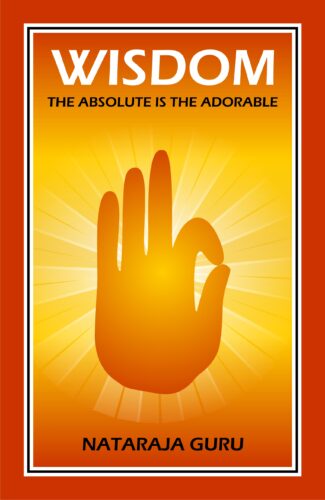
This innovative elucidation charts out the structural map of wisdom the finalised knowledge concerning life in its generic and specific aspects. It encompasses the entire range of human wisdom including epistemology, axiology, politics and mysticism.
This strikingly innovative elucidation charts out the structural map of wisdom the finalised knowledge concerning life, both in its generic and specific aspects. Nataraja Guru, the eminent contemporary thinker, handles the theme as well as the methodology in a very original way. Thematically it encom-passes the entire range of human wisdom, including epistemology, axiology, mathematics, sociology, politics and mysticism. The author presents a scheme of coherent pattern in which all distinctions between contemplative and active, functional and theoretical, contingent and necessary, Eastern and Western dissolve into the unity of the Absolute Truth. The subject-matter and object-matter of wisdom when put in proper perspective around the normative notion of the Absolute, culminate in the idea of common human happiness. In the age of excessive specialization and compart-mentalization, Nataraja Gurus handling of the subject matter is a unique response to the legitimate cry for unification and integration. The methodology adopted throughout this interpretation is unitively taking care of the vertical progress of human wisdom along with the horizontal process of adjustment with the incidental necessities that are demanded by the process. Nataraja Gurus insightful combination of the spiritual with the modem science stands out as a tall land-mark in the field of contemporary wisdom and scholar-ship. It is a powerful beacon to the solace-seeking mankind that is being tortured by the outrageously materialistic society.

The philosophy of Wittgenstein and the Advaita Vedanta philosophy are two philosophical traditions far apart in time and cultural space yet they possess striking similarities. This volume painstakingly researches Wittgenstein’s works and the basic texts of Vedanta, the Upanishads, the Brahmasutra and the Bhagavad-Gita, delving deep into their similarities.
The philosophy of Wittgenstein and the Advaita Vedanta philosophy are two philosophical traditions far apart in time and cultural space yet they possess striking similarities. This painstaking research carried out with a rare thoroughness by an erudite scholar, Ravindra K. S. Choudhary, shows that there are illumi-nating parallels between them even while recognizing their legitimate differences. The work argues that though Advaita Vedanta did not exert a direct influence over Wittgenstein, the philosopher owes much to Schopenhauer who was a great admirer of the Upanishads. Examining a variety of Wittgenstein’s works earlier as well as later and the basic texts of Vedanta, the Upanishads, the Brahmasutra and the Bhagavad-Gita, along with Shankara’s interpretations of them, it delves into their similarities vis a vis the question of reality, the realm of value and some central issues of ethics and religion. It observes that, for instance, Wittgenstein’s notion of the mystical (das Mystische) is similar to the Advaitic view of Brahman. For both, the matters of value have a higher or transcendental level as distinct from the world of facts. Wittgenstein’s idea of a good or happy life is very close to the Vedantic ideals of jivanmukti as well. The work goes on to show that the Vedantic parallels of Wittgenstein’s philosophy persists in distinctive ways from the Tractatus to his last writings. The volume reveals a fresh approach in the field of comparative philosophy. The volume will benefit all those concerned with the discipline of philosophy, Indian or Western.
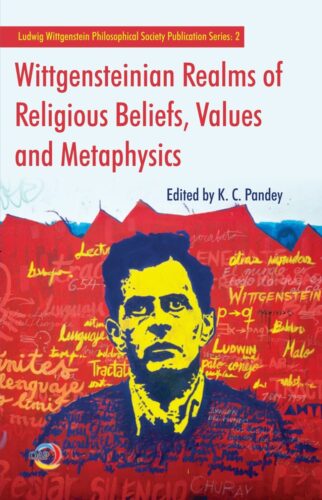
All that cannot be expressed in language, for early Wittgenstein, belong to the realm of Unsayable or Showable. Such a realm consists of religious beliefs, ethical values, aesthetics, metaphysics, solipsism, love, death among other aspects of life which language is incapable of depicting successfully. Later Wittgenstein did not insist on the inexpressibility of these realms as each of them has their own distinct form of life. In this background this anthology is an attempt to explore various facets of these aspects of Wittgensteinian philosophy through various elucidations and interpretations. It is classified into three sections, viz. “Religious Beliefs, Wittgensteinian Fideism, Religious Pluralism, and Cultural Debates”, “Absolute Value, Ethics, Aesthetics, Architecture” and “Subjectivism, Solipsism, Metaphysics, and Hermeneutics”. It aims at bringing out the current development in the field as found in the debates and discussions on Wittgensteinian philosophy in the contemporary philosophical world.
All that cannot be expressed in language, for early Wittgenstein, belong to the realm of Unsayable or Showable. Such a realm consists of religious beliefs, ethical values, aesthetics, metaphysics, solipsism, love, death among other aspects of life which language is incapable of depicting successfully. Later Wittgenstein did not insist on the inexpressibility of these realms as each of them has their own distinct form of life. In this background this anthology is an attempt to explore various facets of these aspects of Wittgensteinian philosophy through various elucidations and interpretations. It is classified into three sections, viz. “Religious Beliefs, Wittgensteinian Fideism, Religious Pluralism, and Cultural Debates”, “Absolute Value, Ethics, Aesthetics, Architecture” and “Subjectivism, Solipsism, Metaphysics, and Hermeneutics”. It aims at bringing out the current development in the field as found in the debates and discussions on Wittgensteinian philosophy in the contemporary philosophical world.

The book is a biography of the eminent saint-philosopher of modern India, Guru Narayana. It deals with the meaning and essence of guruhood and gives rational explanations for many baffling aspects of life. It reveals the significance of his Advaita Vedanta method for introducing a new science of wisdom dialectics. It also describes the physical and psychological conditions of South India and explores the spirituality of India.
Millions of people have been deeply affected by the life and teachings of the Guru Narayana, who is the central figure of this book. This is a biography, not only of the Guru Narayana, but of Guruhood itself. Religions and philosophies have their sources in such men, and the aim here is to clarify this fact, without being sentimental or sensational. In doing so, many hitherto baffling enigmas of Indian life are given a rational explanation for the first time. Nataraja Guru, the disciple-successor of the Narayana Guru, uses the contemplative discipline which was characteristic of the Guru Narayana, and brings the Advaita Vedanta method into the forefront of global thought as understood today, introducing a new science of Wisdom-Dialectics. Nataraja Gurus scheme of correlation between science and mysticism amounts to an epochal advance in philosophy. This book represents the voice of the Guru. The Word of the Guru provides a quantity of original material for study, including fully annotated and carefully translated writings of Guru Narayana. It describes the physical and psychological conditions of South India with great brilliance. The spirituality of India is set forth here in its clearest terms, unambiguous and shorn of all limiting frontiers, suitable for readers in all parts of the world.

Book exploring the names nuances of the theme of World as Dream in all its richness to establish the plausibility of the philosophers position that though the world appears to be real might turn out to be false like a dream.
The ontological status of the world has been a subject of much philosophical speculation despite the fact that the world is an existential given. According to some philosophers, such existential givenness could turn out to be comparable to the earth’s apparent flatness, with the actual truth turning out to be the very opposite of what it seems. Philosophers often cite the experience of a dream to establish the plausibility of their position that the world might appear to be real while it is being experienced, and yet turn out to be ultimately false like a dream. This motif plays a particularly important role in schools of philosophy in the East and the West which are idealistic in their orientation.
This book explores the nuances of the theme of the world as dream in all its richness.
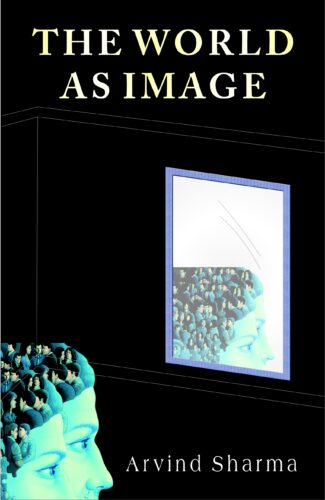
Book exploring one of Advaita Vedantas central illustrative themes with which it tries to render its doctrines credible in the face of our experience of plurality and variety in life.
There is something profoundly counter-intuitive about Advaita Vedanta. Nothing is more obvious to both the philosophical as well as the non-philosophical observer than the fact that multiplicity constitutes the basic datum of our experience. Variety is not only the spice of life it is a cardinal fact of life. The doctrines of Advaita Vedanta shock us by flying in the face of this fact and by denying any ultimacy to that plurality and variety which we experience so intimately. This naturally raises the question: how does Adavita Vedanta render its doctrines credible in the face their apparent implausibility. This book is an exploration of one of its central illustrative devices with which it tries to accomplish this daunting task.

The essays study different dimensions of the modern autonomous individual existence such as the pre-selfconscious self and the minds insane aspects. They discuss artistic, especially aesthetic, experience, and ethics and moral philosophy.
How are we to understand the many religious traditions of humankind? Should we view our own religion as true and all others false? Should we regard all religions as the same? Should we view the religions as a cacophony? Professor Bryant explores these questions in this challenging book. He seeks to find a path through contemporary religious conflict that will lead us to greater understanding and appreciation of the plurality of religious traditions. Woven on the Loom of Time: Many Faith and One Divine Purpose argues that the religious traditions share a common purpose: to fit humanity for the Ultimate. But that shared purpose is unfolded differently in each religious tradition. Moreover, the great religious traditions unfold on the loom of time where they clothe and reshape our humanity to make us fit for the Ultimate. Professor Bryant unfolds his argument in five chapters. After an introductory chapter, he lays the foundation for an understanding of dialogical humanity that sees the religious traditions as a dialogue with transcendence. He then explores the multiform religious traditions Hindu, Buddhist, Christian, Muslim, Confucian and Sikh as nurseries for the formation of humanity. In the fifth chapter, he unfolds a grammar of the spirit that sees religion as shaping and clothing humanity on the loom of time. In the Epilogue, Bryant restates his thesis in a poem concerning divine-human destiny.
| There are no products |